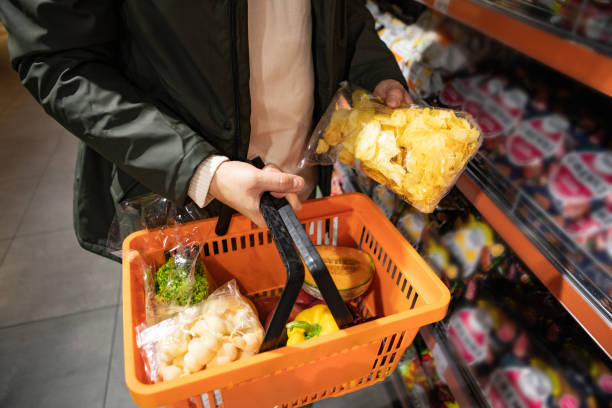The Golob government started to take stock of the prices of basic food items in September last year, and publish them on its website. What we can see from the data on this website is that the average price of a basket of basic foods, as monitored by the price comparison programme of the Ministry of Agriculture, Forestry and Food, has fallen by more than 17 percent since September last year, even though prices have risen by almost 20 percent on average. And in all this, we even learned that, despite general global inflation, traders in Italy are selling their food for much cheaper than the traders here.
The Statistical Office of the Republic of Slovenia reported a 10.3 percent year-on-year increase in inflation, with more expensive food contributing 1.7 percent to the rise, according to the latest data. And despite food becoming more expensive since September, the government says that the government’s basket of basic foodstuffs has become cheaper. The latter suggests that retailers are free to decide the price of their products, and according to data over the past few months, it could even be said that they are “competing to see who has the lower price of the food in their basket.”
The government’s food basket, which allows consumers to monitor and compare the retail prices of a basket of fifteen basic foodstuffs from different Slovenian retailers, includes white wheat flour (type 500), white bread, pasta, beef, pork and chicken meat, fresh whole milk (with 3,5 percent milk fat), liquid yoghurt (with 3,2 percent milk fat), semi-hard semi-fat cheese, butter, eggs (category M), apples, potatoes, sunflower oil and white sugar. According to the government’s website, the 10th census showed a decrease of 2.84 euros, or 6.44 percent, in the average price of the cheapest basket. The average cheapest basket of basic foodstuffs thus currently has the lowest price over the entire period since monitoring began (from the 13th of September 2022 to the 17th of January 2023). Why, then, do people living near te border go to Italy to buy their groceries? And why do they save up to 100 euros there? Many people are asking the same question, including a Twitter user who wrote: “Where is the comparison of Golob’s basket? What are the experts doing? A family in Nova Gorica saves up to 100 euros a month by shopping across the border.”
However, if we follow the trend since September, we see that the difference in the basket of foodstuffs varies between retailers, as if they were competing to see who would have the lowest prices for the specific foods in their basket. The average basket price in the first census on the 13th of September was 49.90 euros, with Eurospin being the cheapest (47.38 euros) and Tuš the most expensive (56.54 euros). Later on, we can see that all of a sudden, all the retailers had cheaper groceries, which raises a logical question at this point: can retailers just “make up” prices and do they deliberately set higher prices for other products, which are not part of the basic basket?
In the second census, Eurospin was the cheapest (40.43 euros), while Tuš was again the most expensive (46.37 euros). In the fourth census, there was a significant difference, as suddenly Tuš was the cheapest with a basket for 39.17 euros, while the most expensive basket was at Hofer, at 46.09 euros. The retailers deemed the most expensive were thus Hofer, Mercator and Eurospin, while Lidl and Tuš were the cheapest. In the last census on the 17th of January, Lidl had the cheapest basket of basic foodstuffs (39.06 euros) and Eurospin the most expensive (44.28 euros).
Interestingly, during this period (from the 13th of September 2022 to the 17th of January 2023), this particular basket of foodstuffs has always remained the cheapest. It originally cost 49.90 euros, but now costs 41.28 euros, a decrease of around 17 percent. The Ministry of Agriculture, Forestry and Food also said that the difference between the cheapest and most expensive basket among traders, which was just over 5 euros at the last census, has narrowed. Only Hofer has higher prices this time. Pasta, flour and bread have become cheaper, according to the government’s Our Super Foods website. Pork and beef are also cheaper.
Food is getting more expensive, but the basket of basic foods is cheaper?
According to the Statistical Office of the Republic of Slovenia, the prices of food and non-alcoholic beverages have risen by 18.6 percent in the last year, with food rising by around 1.7 percent in December alone, compared to November. In 2022, the price of edible oil rose the most, followed by butter and freshly skimmed milk. On the meat market, pork, beef and poultry meat became more expensive. The price of bread has risen by an average of 10.8 percent since the beginning of the year, while flour and cereal products have risen by 22.1 percent, according to the Statistical Office. According to Eurostat, the European Statistics Office, the rising food prices were the main driver of consumer price inflation in euro countries last year. According to their calculations, the price index for food and non-alcoholic beverages in Slovenia rose by 14.2 percent from the beginning of the year to the end of last year and by 4.3 percent from September to December alone. Despite these increases, which are felt by everyone, the price of the government’s food basket is falling. How is this possible? All the indications are that prices can only be brought down if retailers are given a little external incentive.
Ana Horvat


